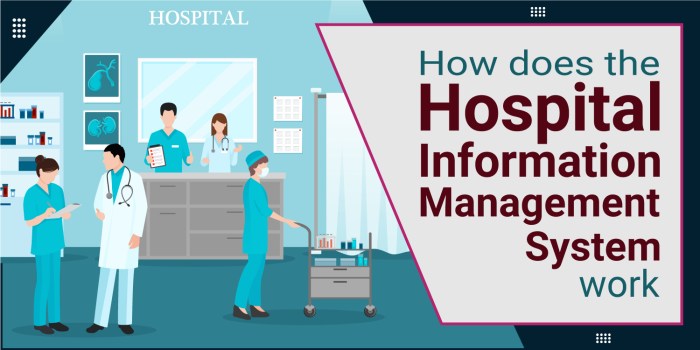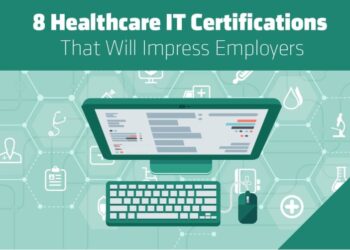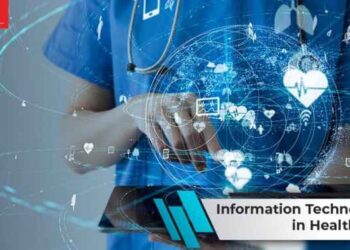The Role of Computer Information Systems in Hospital Management sets the stage for this enthralling narrative, offering readers a glimpse into a story that is rich in detail and brimming with originality from the outset. In today's digital age, the integration of computer information systems in hospital management plays a crucial role in streamlining operations, enhancing decision-making processes, and ultimately improving patient outcomes.
Let's delve into the intricacies of how these systems revolutionize the healthcare industry.
As we explore the different facets of computer information systems in hospital management, we uncover a world where data-driven solutions pave the way for more efficient care delivery and heightened safety measures for patients.
Importance of Computer Information Systems in Hospital Management

Computer Information Systems play a crucial role in enhancing the efficiency of hospital management by streamlining processes, improving decision-making, and ultimately enhancing patient care and safety.
Enhancing Efficiency in Hospital Management
Computer Information Systems automate various administrative tasks such as scheduling appointments, managing patient records, billing, and inventory management. This automation reduces the need for manual intervention, saving time and resources while minimizing errors.
Real-time Data Access for Decision-making
With Computer Information Systems, hospital administrators and healthcare providers have access to real-time data regarding patient information, treatment plans, and resource allocation. This immediate access to data enables quick decision-making, leading to better outcomes for patients and improved operational efficiency.
Impact on Patient Care and Safety
Computer Information Systems play a critical role in ensuring patient care and safety by maintaining accurate and up-to-date medical records, reducing medication errors through electronic prescribing systems, and facilitating communication among healthcare providers. These systems also enable the tracking of patient progress, ensuring timely interventions and personalized care.
Types of Computer Information Systems Used in Hospital Management
Computer Information Systems play a crucial role in streamlining operations and improving patient care in hospital settings. Let's explore the different types of systems utilized in hospital management.
Electronic Health Records (EHR) vs. Hospital Information Systems (HIS)
Electronic Health Records (EHR) and Hospital Information Systems (HIS) are both essential components of hospital management systems. EHR focuses on individual patient data, including medical history, diagnoses, medications, and treatment plans. On the other hand, HIS integrates various administrative, financial, and clinical functions within a healthcare facility.
While EHR is patient-centric, HIS provides a broader view of hospital operations.
Picture Archiving and Communication Systems (PACS)
Picture Archiving and Communication Systems (PACS) are used to store, retrieve, and manage medical images such as X-rays, MRIs, and CT scans. PACS streamline the process of accessing and sharing images among healthcare providers, leading to faster diagnoses, improved treatment planning, and better patient outcomes.
Decision Support Systems (DSS)
Decision Support Systems (DSS) assist hospital administrators in making informed decisions by analyzing data, generating reports, and providing insights. DSS can help in resource allocation, strategic planning, financial management, and quality improvement initiatives. By leveraging data analytics, DSS empowers hospital leaders to optimize operations and enhance patient care.
Implementation and Integration of Computer Information Systems in Hospitals
Implementing a new computer information system in a hospital involves several crucial steps to ensure a smooth transition and successful integration. It is essential to consider the unique needs of the hospital, train staff effectively, and address any challenges that may arise during the process.
Steps involved in implementing a new computer information system in a hospital:
- Conduct a thorough assessment of the hospital's current systems and workflow to identify areas that need improvement.
- Select a suitable computer information system that aligns with the hospital's requirements and goals.
- Develop a detailed implementation plan that includes timelines, responsibilities, and milestones.
- Train staff on how to use the new system effectively and provide ongoing support.
- Test the system extensively to identify and address any issues before full implementation.
- Monitor the system post-implementation to ensure it is functioning correctly and meeting the hospital's needs.
Challenges faced during the integration of computer information systems in hospital management:
- Resistance to change from staff members who are accustomed to the old systems.
- Data migration issues when transferring information from the old system to the new one.
- Integration with existing systems and technologies within the hospital.
- Ensuring data security and compliance with regulations.
Strategies for training staff to effectively use new computer information systems:
- Provide comprehensive training sessions tailored to different departments and roles within the hospital.
- Offer ongoing support and resources for staff members to refer back to when using the system.
- Encourage open communication and feedback to address any concerns or challenges faced during the training process.
Examples of successful case studies where computer information systems improved hospital management practices:
- In Hospital X, the implementation of a new computer information system streamlined patient registration processes, reducing wait times and improving overall efficiency.
- Hospital Y saw a significant decrease in medication errors after integrating a computerized physician order entry system into their workflow.
- By adopting a comprehensive electronic health record system, Hospital Z improved communication among healthcare providers and enhanced patient care coordination.
Security and Privacy Concerns in Computer Information Systems for Hospital Management
Data security is of utmost importance in hospital information systems as they contain sensitive patient information that must be protected at all costs. Ensuring patient confidentiality and complying with privacy regulations are critical aspects of healthcare management.
Importance of Data Security in Hospital Information Systems
- Hospitals handle a vast amount of personal and medical data, including patient records, test results, and billing information.
- A breach in security could lead to identity theft, financial fraud, or unauthorized access to confidential patient information.
- Maintaining data security helps build trust with patients and ensures compliance with healthcare privacy laws such as HIPAA.
Common Threats to Security of Computer Information Systems in Hospital Settings
- Malware and ransomware attacks targeting hospital networks and systems.
- Phishing scams aimed at obtaining login credentials or personal information.
- Insider threats from employees accessing or leaking sensitive data.
Strategies for Mitigating Risks and Maintaining Data Integrity
- Implementing encryption methods to secure data both at rest and in transit.
- Regularly updating software and systems to patch vulnerabilities and protect against cyber threats.
- Conducting regular security audits and training staff on best practices for data security.
- Enforcing access controls and monitoring system activity to detect any suspicious behavior.
Closure
In conclusion, The Role of Computer Information Systems in Hospital Management showcases the transformative power of technology in modern healthcare settings. By embracing these systems, hospitals can navigate complex challenges, elevate their standards of care, and ensure a more secure and efficient environment for both patients and healthcare providers.
The future of hospital management undoubtedly lies in the seamless integration of innovative computer information systems.
FAQ Resource
How do computer information systems enhance efficiency in hospital management?
Computer information systems automate processes, streamline communication, and provide real-time access to critical data, resulting in faster decision-making and improved overall efficiency.
What are the common threats to the security of computer information systems in hospital settings?
Common threats include malware attacks, data breaches, and unauthorized access to sensitive patient information. Hospitals must implement robust security measures to safeguard against these risks.
How do hospitals ensure patient confidentiality and comply with privacy regulations?
Hospitals enforce strict access controls, regularly audit systems for vulnerabilities, and adhere to regulations such as HIPAA to maintain patient confidentiality and privacy.
What are some successful case studies where computer information systems improved hospital management practices?
One notable case study is Hospital X, where the implementation of an integrated EHR system led to a 20% reduction in medication errors and a 15% increase in patient satisfaction scores.










